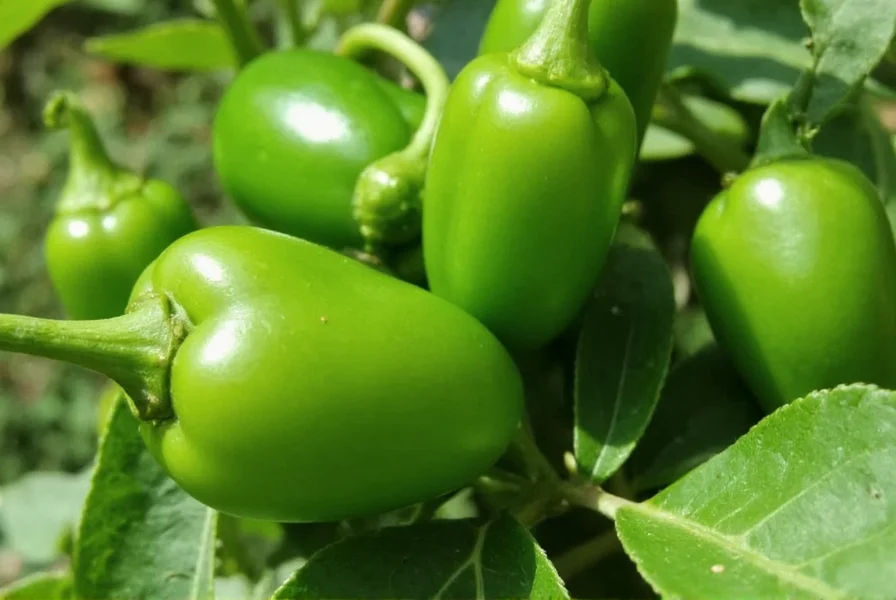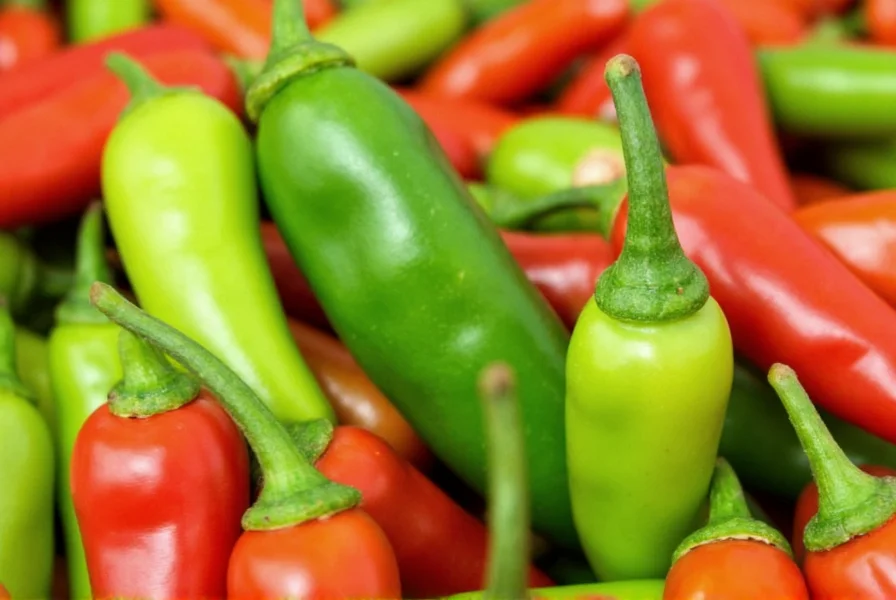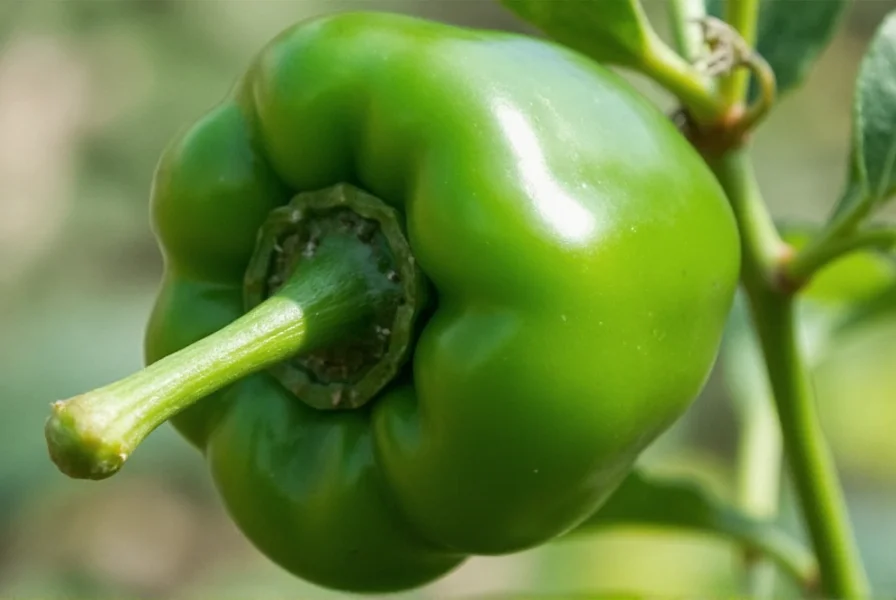Understanding Serrano Peppers: A Complete Guide
When exploring what is a serrano pepper, it's essential to understand this versatile chili's unique characteristics that distinguish it from other popular peppers. Serrano peppers (Capsicum annuum) have been cultivated in Mexico for centuries and remain a staple in traditional salsas, pico de gallo, and guacamole. Unlike bell peppers which contain no capsaicin, serranos deliver a noticeable kick that enhances dishes without overwhelming them.
Physical Characteristics of Serrano Peppers
Serrano peppers typically measure between 1-4 inches in length with a diameter of approximately 0.5-0.8 inches. They grow upright on the plant, unlike hanging varieties such as cayenne peppers. The skin is smooth and glossy, starting bright green and maturing through yellow, orange, and finally to deep red. This color progression correlates with increasing heat levels and flavor complexity. Understanding what does a serrano pepper look like helps identify them correctly at markets.
| Pepper Variety | Scoville Heat Units | Size (Length) | Flavor Profile |
|---|---|---|---|
| Serrano | 10,000-23,000 SHU | 1-4 inches | Bright, grassy, slightly fruity |
| Jalapeño | 2,500-8,000 SHU | 2-3.5 inches | Earthy, vegetal, moderate heat |
| Habanero | 100,000-350,000 SHU | 1-2.5 inches | Tropical fruit, floral, intense heat |
| Cayenne | 30,000-50,000 SHU | 2-5 inches | Sharp, pungent, consistent heat |
Heat Level and Flavor Profile
When considering how hot are serrano peppers on Scoville scale, they rank significantly hotter than jalapeños (about 2-5 times hotter) but considerably milder than habaneros. The heat is concentrated in the ribs and seeds, with the flesh containing less capsaicin. Serranos deliver an immediate, sharp heat that builds quickly but doesn't linger as long as some hotter varieties. Their flavor profile features bright, grassy notes with subtle citrus undertones that distinguish them from the earthier jalapeño. This balance of heat and flavor makes them ideal for fresh preparations where pepper characteristics should shine through.

Culinary Applications and Traditional Uses
Serrano peppers excel in fresh applications where their crisp texture and vibrant flavor can be appreciated. They're essential in Mexican cuisine for:
- Traditional pico de gallo and fresh salsas
- Guacamole for added heat without overpowering avocado
- Adobo sauces and marinades
- Infused vinegars and oils
- Garnishing tacos and other street foods
Chefs often prefer serranos over jalapeños when serrano pepper vs jalapeno heat comparison matters for dishes requiring more pronounced heat. Unlike habaneros which can dominate a dish, serranos provide noticeable heat while allowing other ingredients to remain prominent. For those exploring serrano pepper culinary uses, they work exceptionally well in raw applications but can also be roasted or pickled.
Growing Serrano Peppers
For gardeners interested in growing serrano peppers at home, these plants thrive in warm climates with full sun exposure. They typically reach 24-36 inches in height and produce abundant upright peppers. Serranos require well-draining soil and consistent watering, with harvest occurring approximately 70-80 days after transplanting. The peppers can be harvested at any stage of color development, though heat intensity increases as they mature from green to red. Container gardening works well for serranos, making them suitable for patios and balconies in cooler climates.
Substitution Options and Storage
When you need serrano pepper substitution options, consider these alternatives based on availability and desired heat level:
- For similar heat: Fresh green Thai chilies (use sparingly as they're hotter)
- For milder option: Jalapeños (use 2-3 times the amount)
- For cooked applications: Chipotle peppers in adobo (smoky alternative)
Proper storage extends freshness significantly. Store unwashed serranos in the crisper drawer of your refrigerator for 2-3 weeks. For longer preservation, consider pickling, freezing (whole or sliced), or drying. Understanding how to store serrano peppers properly maintains their quality and extends usability in your kitchen.

Nutritional Benefits
Beyond their culinary value, serrano peppers offer notable health benefits as part of serrano pepper nutritional benefits. They're an excellent source of vitamin C (providing more than oranges by weight), vitamin A, and capsaicin—the compound responsible for their heat. Capsaicin has been studied for potential benefits including metabolism support, pain relief, and anti-inflammatory properties. Like all chili peppers, serranos are low in calories and contain dietary fiber, making them a healthy addition to balanced diets.
Frequently Asked Questions
How does serrano pepper heat compare to jalapeño?
Serrano peppers are significantly hotter than jalapeños, typically ranging from 10,000-23,000 Scoville Heat Units compared to jalapeños' 2,500-8,000 SHU. This makes serranos approximately 2-5 times hotter than jalapeños, with a sharper, more immediate heat that builds quickly but doesn't linger as long.
Can you eat serrano peppers raw?
Yes, serrano peppers are commonly eaten raw in Mexican cuisine, particularly in fresh salsas, pico de gallo, and guacamole. Their crisp texture and bright flavor shine in raw applications. When handling raw serranos, wear gloves to avoid skin irritation from capsaicin, and avoid touching your face. Remove seeds and membranes for milder heat.
What's the best way to store serrano peppers?
Store unwashed serrano peppers in the crisper drawer of your refrigerator for optimal freshness, where they'll last 2-3 weeks. For longer storage, freeze whole or sliced peppers in airtight containers (up to 6 months), pickle them in vinegar, or dry them for use in spice blends. Always wash hands thoroughly after handling hot peppers.
Are red serrano peppers hotter than green ones?
Yes, red serrano peppers are typically hotter than their green counterparts. As serranos mature from green to red, their capsaicin content increases, resulting in higher heat levels. Red serranos also develop more complex, slightly sweeter flavor notes compared to the brighter, grassier taste of green serranos. The color change indicates full maturity and maximum flavor development.











 浙公网安备
33010002000092号
浙公网安备
33010002000092号 浙B2-20120091-4
浙B2-20120091-4